|
| |
Back to Fighters
|
|
|
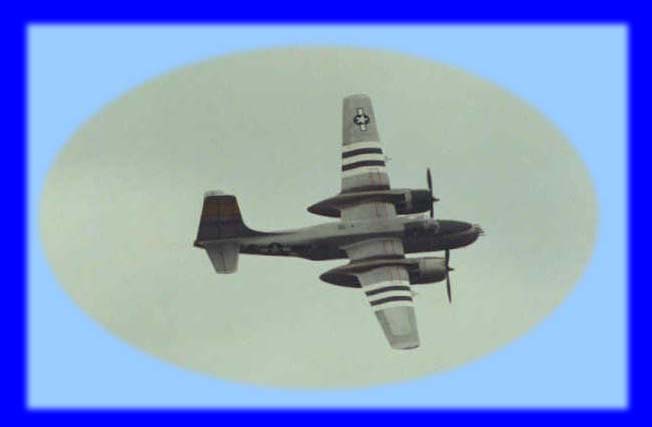 |
The Douglas A-26 Invader was a faster,
lightweight derivative of the burly A-20 Havoc. Designed as a light
bomber or ground attack aircraft, it could fly at 370mph on its two
Pratt & Whitney Double Wasp engines. It first flew in July 1942.
2,450 were built before the end of the second world war ended
production. This Invader was flying at
the Duxford air display in 1998. |
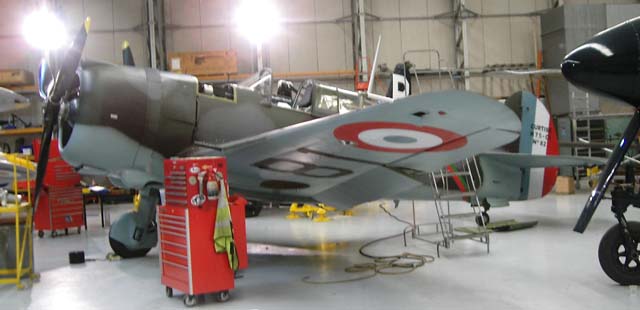 |
The Curtiss P-36 Hawk first flew in May 1935,
and was one of the stock American fighters in service at the
outbreak of the second world war. It was powered by a 1,050hp Pratt
& Whitney R-1830 radial engine or, in some versions, a 1,200hp
Wright R-1820. It was a stubby machine, 28 feet 7 inches long with a
wing span of 37 feet 4 inches. Top speed was 315mph (radials create
more drag than inlines), and range was a useful 800 miles. About
1,000 were built, including 335 for France, 295 for Britain (where
it was called the Mohawk) and 210 for the United States forces.
This one was pictured while undergoing
restoration at Duxford, May 2005. |
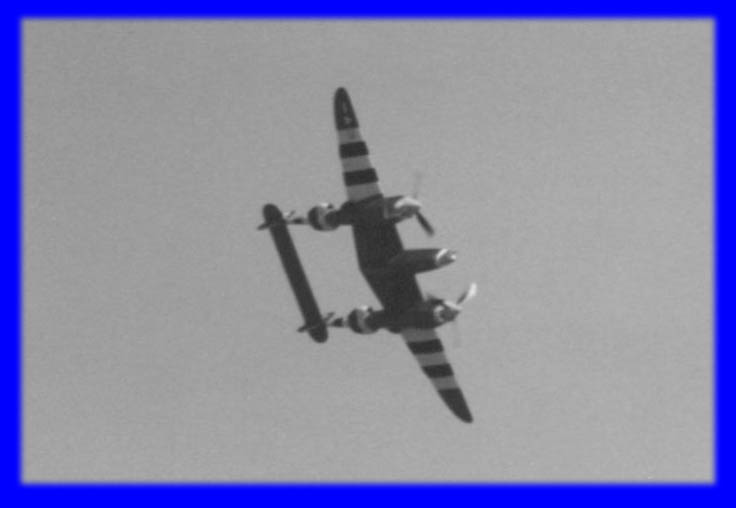 |
The Lockheed P-38 Lightning was very unusual
for a fighter in having two engines and two tail booms. It was fast
(top speed 415 mph) and had the astounding range for a fighter of
2,250 miles. It was powered by two Allison inline engines of 1,475hp
each. It first flew in January 1939, and was subsequently produced
in many versions. All told, some 9,920 were built by the end of the
war. Few remain airworthy today. It is
particularly sad that this picture shows a P-38 flying at Duxford in
1996 the day before it crashed executing a roll too close to the
ground, during which the ailerons apparently jammed. |
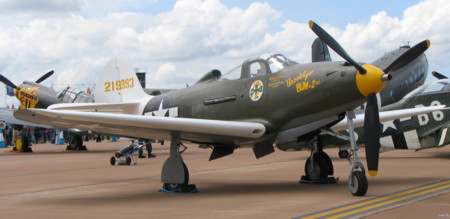 |
The Bell P-39 Airacobra was a strange
fighter, with the engine mounted in the middle behind the pilot's
seat. The intention was to make it more manoeuvrable by having the
engine near the centre of gravity. It was also odd for its day in
having a tricycle (nosewheel) undercarriage. Its 1,200hp Allison
engine gave it a top speed of 385mph. Its range was only 675 miles.
It first flew in 1939. Over 9,500 were built, of which 5,000 were
used by the Russians.
This one was at Fairford in July 2007. |
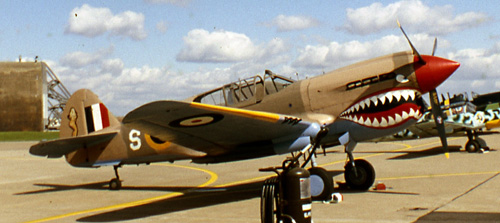 |
The Curtiss P-40 Warhawk was developed from
the earlier P-36 Hawk, but fitted with an Allison V-1710 inline
engine of between 1,150hp and 1,360hp depending on version. Some
(the P-40F) were also fitted with Rolls-Royce Merlins. The inline
engine increased the top speed to 365mph; range became 950 miles in
its long range version. The inline engine made it longer than the
P-36 at 31 feet 9 inches, though the wing span is the same. First
flown in October 1938, 13,738 were built (surpassed in American
fighters only by the P-51 Mustang and P-47 Thunderbolt). Versions
were also exported to the UK and other countries, where it was
variously called the Kittyhawk or Tomahawk..
Upper Heyford, August 1986 |
|
|
The North American P-51 Mustang is probably
the best known of all American wartime fighters. It might be
considered the American equivalent of the Spitfire - indeed, many
had the same Rolls-Royce Merlin engine. It could manage 440mph and,
with a range of 2,080 miles, it was suitable as an escort fighter
for long range bombers. 13,300 had been built by the time production
ended after the war. The type remained in service as a ground attack
aircraft with some air forces well into the 1970s.
This pristine P-51D is based at North Weald,
where it was pictured in December 2005. |
|
|
|
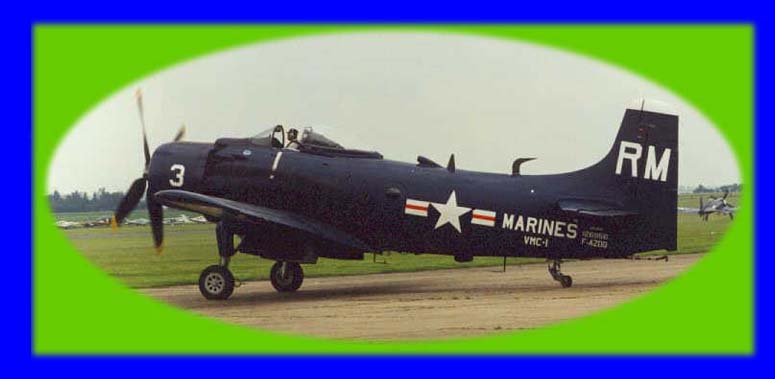 |
The Douglas AD Skyraider was a heavy attack
aircraft operated from aircraft carriers. First flown in March 1945,
it was actually just too late to see combat service in the second
world war. For a thumping big aircraft (maximum weight was 25,000lb)
it was quite fast - top speed 320mph thanks to its huge 2,800hp
engine. 3,180 were built, and continued in service well into the
1960s, by which time it had been redesignated A-1.
This one is kept airworthy in France, but was
seen visiting Duxford in 1998. |
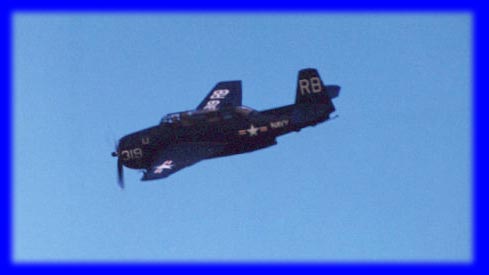 |
The Grumman TBF Avenger was a torpedo bomber
designed to be operated from American aircraft carriers. It first
flew in 1941. 9,800 were built, and served with great distinction in
both the American and British navies. Powered by an 1,850hp Wright
Double Cyclone engine, it could reach speeds of 270mph and had a
range of 1,000 miles.
This Avenger was flying at Duxford in 1998. |
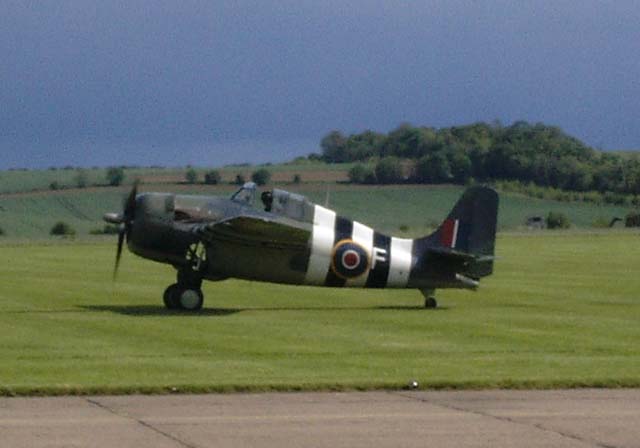 |
The Grumman F4F Wildcat was one of the stock
fighters of the US Navy during the second world war. It first flew
in September 1937. Its 1,200hp Pratt & Whitney Twin Wasp engine gave
it a useful top speed of 328mph. With a range of 1,150miles,
operated from aircraft carriers, it was a very useful performer.
Almost 8,000 were built, being used by the US and British forces.
This one, in British colours, is active at
Duxford, where it was pictured in May 2005. |
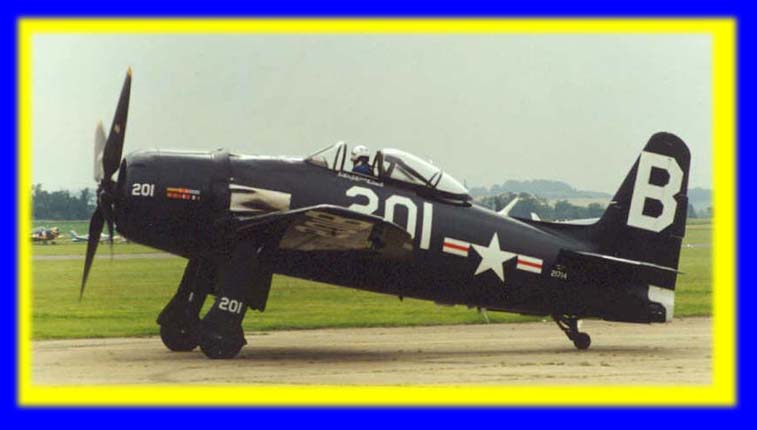 |
The Grumman F8F Bearcat first flew in August
1944, and saw active service towards the end of the second world
war. A relatively small, agile aircraft, it was still powered by a
huge 2,100hp Pratt & Whitney Double Wasp engine, which gave it a top
speed of 420mph. 1,265 were built. They were heavily armed, and were
accordingly successful in battle against the high quality Japanese
opposition. This Bearcat was also at
Duxford in 1998. |
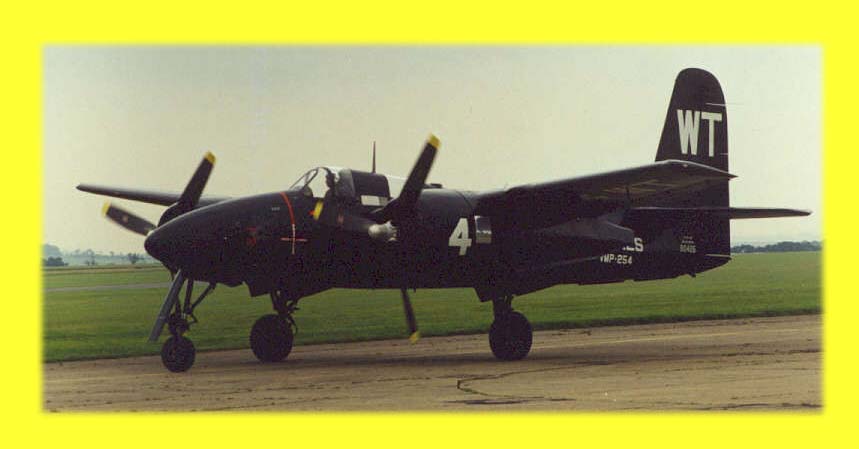 |
The Grumman F7F Tigercat, which first flew in
December 1943, was intended as a close air support aircraft. Its
secondary ground attack role explains its heavy, twin engined
construction. Only 365 were built due to a lengthy development
period which saw the end of the war before many could enter service.
Its two 2,100hp Double Wasp engines (same as powered the Bearcat)
gave it a top speed of 435mph. This
Tigercat was at (surprise, surprise) Duxford in 1998. |
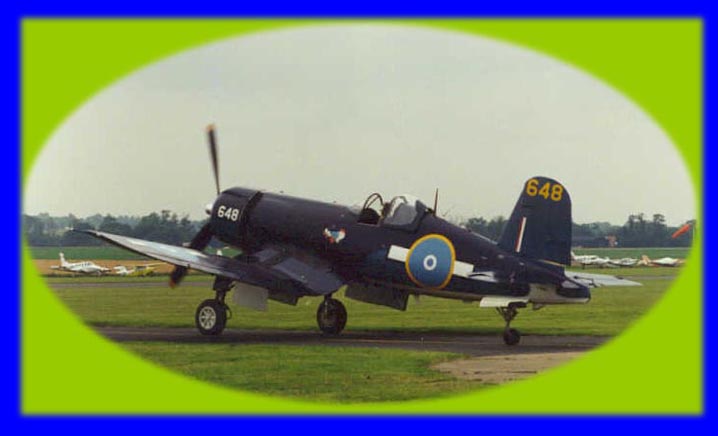 |
The Vought F4U Corsair was a supremely agile
and effective carrier-borne fighter. Its 2,450hp Pratt & Whitney
Double Wasp engine gave it a top speed of 450mph, one of the best of
the whole war, but its main advantage lay in its manoeuvrability. Of
particular note is the cranked wing, designed to minimise the
undercarriage length while maintaining adequate propeller clearance
from the carrier deck, and also enhancing low-speed stability for
landing while maintaining agility at high speed. It first flew in
May 1940. 12,680 were built. No prizes
for guessing that this one was also pictured at Duxford in 1998! |





|